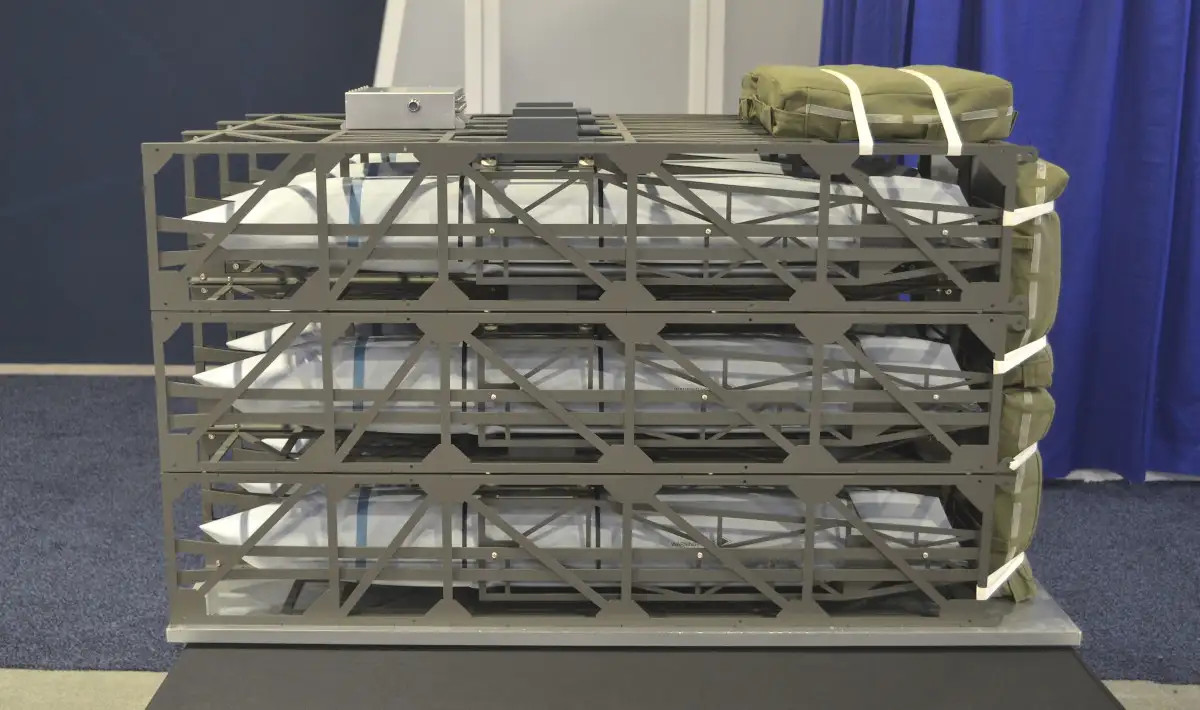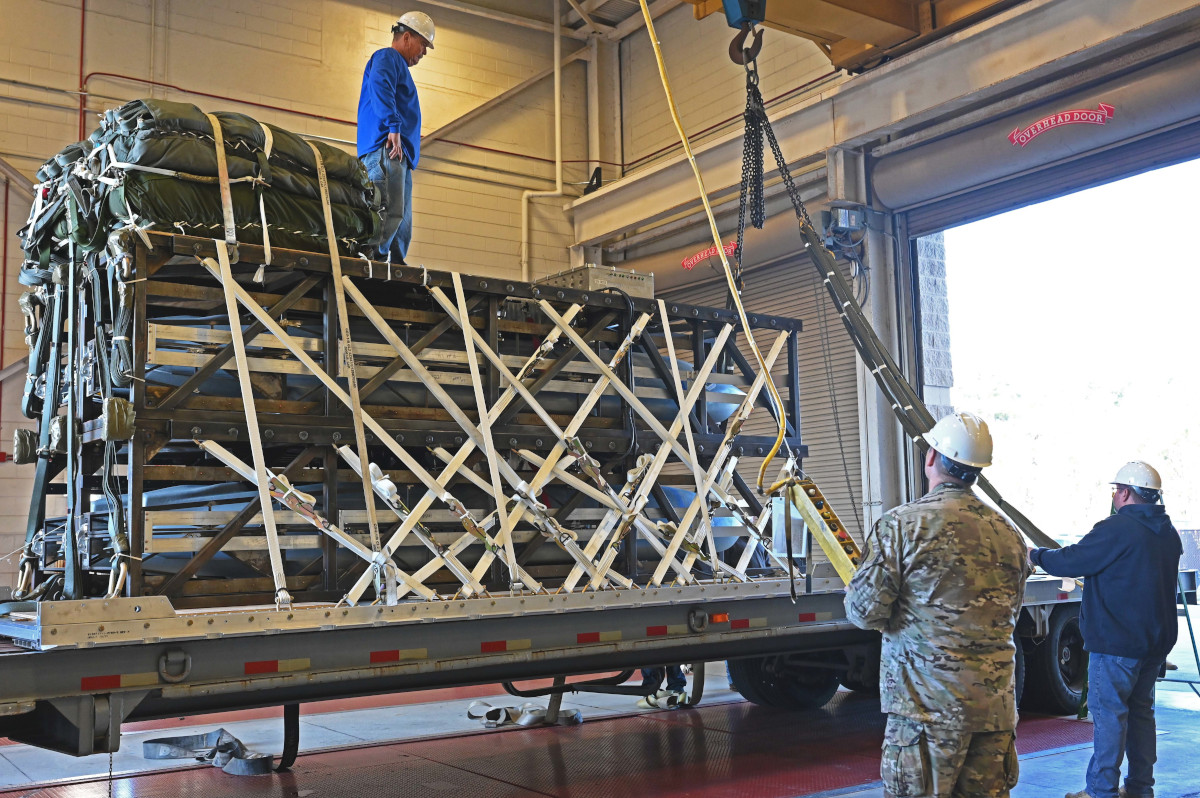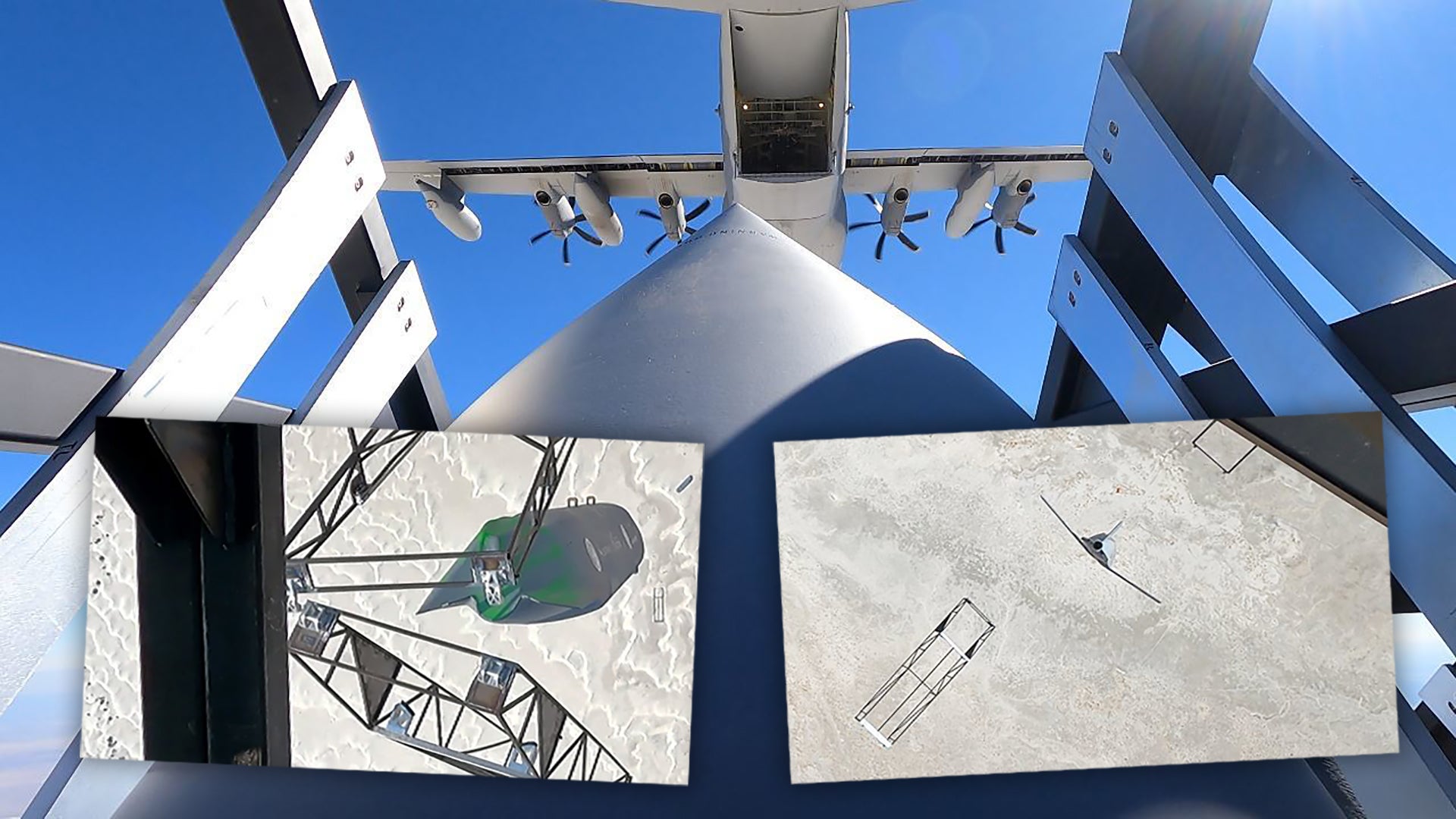The U.S. Air Force says it has conducted the first successful end-to-end test of its Rapid Dragon air-launched palletized munitions concept. An MC-130J Commando II special operations transport released an unspecified live cruise missile using the prototype system, which subsequently hit a target floating in the Gulf of Mexico.
The Air Force Research Laboratory (AFRL), which is leading the Rapid Dragon program through its Strategic Development Planning and Experimentation (SDPE) office, announced the completion of this test today. The Air Force Special Operations Command (AFSOC), the Air Force’s Standoff Munitions Application Center, and the U.S. Navy’s Naval Surface Warfare Center-Dahlgren Division (NSWC-Dahlgren), as well as private contractors Lockheed Martin, Systima Technologies, Safran Electronics & Defense, Parachutes USA, and R4 Integration, Inc., were also involved in this demonstration.
The video below shows a montage of earlier Rapid Dragon flight testing.

“During the December test, an MC-130J flown by an Air Force Special Operations Command operational flight crew, received new targeting data while in flight which was then routed to the cruise missile flight test vehicle (FTV),” according to an Air Force release. “The aircraft agnostic Battle Management System’s inflight receipt and upload of the new targeting data into the FTV was a first-time achievement with a live cruise missile.”
“Once inside the drop zone over the Gulf of Mexico, the MC-130J aircrew airdropped a four-cell Rapid Dragon deployment system containing the FTV and three mass simulants, which were sequentially released from the palletized deployment box while under parachute,” the release continued. “Safe separation from the deployment box and weapon deconfliction was demonstrated using an unconventional deployment method (nose-down vertical orientation). Immediately after the vertical release, the FTV deployed its wings and tail, achieved aerodynamic control, ignited its engine, performed a powered pull-up maneuver, and proceeded toward its newly assigned target. The cruise missile successfully destroyed its target upon impact.”
It is not clear why, but the Air Force has not yet disclosed what actual “current inventory cruise missile armed with a live warhead” it employed this test. Previous tests have involved surrogates meant to represent variants of the stealthy AGM-158 Joint Air-to-Surface Standoff Missile (JASSM) family, which includes the AGM-158C Long Range Anti-Ship Missile (LRASM), as well as a novel design called the Cargo Launch Expendable Air Vehicles with Extended Range, or CLEAVER.
It’s also unclear what the actual target was, beyond that it was afloat in the Gulf of Mexico. The Air Force provided no details, but Lockheed Martin described it as a “vessel.” This might point to the use of a LRASM, which would also mean this test has demonstrated the ability to employ the Rapid Dragon system in an anti-ship role, a general area of growing interest to the Air Force as well as the rest of the U.S. military.
It has certainly been widely reported in the past that a JASSM variant of some kind would be used for live-firing testing as part of Rapid Dragon. Pictures the Air Force released of a test in November that involved the release of an actual cruise missile, albeit one without an engine or a warhead, from this palletized munitions system clearly showed that it was a missile from the JASSM family. Concept art the service has released of this system has depicted it loaded with JASSM-type missiles, as have models of it that have been displayed publicly.

The core idea behind the Rapid Dragon concept is the development of a roll-on/roll-off package to transform various types of airlifters into additional strike platforms, as required. This would give the Air Force a potentially more cost-effective and scalable way to quickly increase its overall stand-off strike capacity, especially during a future major conflict, such as one against China or Russia. The palletized launcher could also be configured to carry other types of munitions or payloads, such as swarms of small drones, as well. Questions have been raised about how viable all of this might be given that U.S. Air Force airlifters would likely be in high demand to perform their primary missions during any similar conflict scenario. You can read more about the overall concept of operations envisioned for this system, and the potential pitfalls, here.

“The program name is derived from a thousand-year-old Chinese military designed crossbow catapult that launched multiple crossbow bolts with the pull of a single trigger, raining destruction down on armies from tremendous ranges,” the Air Force’s release regarding this latest test disclosed, for what appears to be the first time. “These lethal devices were called Ji Long Che—Rapid Dragon Carts. Today, the Rapid Dragon concept is changing the game again, this time as an airborne delivery system for U.S. Air Force weapons. And like its namesake, these palletized munitions promise to unleash mighty salvos en masse on distant adversaries.”

AFRL says that this latest test over the Gulf of Mexico marks the culmination of the current Rapid Dragon test campaign, which started two years ago, but says that it already is planning to conduct another end-to-end live-fire flight test using a C-17A Globemaster III aircraft next year. Air Mobility Command (AMC) C-17As, as well as AFSOC EC-130J Super Js, have been used in previous Rapid Dragon testing.
“Rapid Dragon was able to accelerate development by building a broad and strong team. We were committed to a ’test often/learn-fast’ culture, dedicated to experimenting frequently and taking calculated risks,” Dr. Dean Evans, SDPE’s Rapid Dragon Program Manager, said in a statement. “Collaboration from the onset streamlined the process and accelerated development, involving groups from the program inception that are not normally included at the very early stages, and that has made all the difference.”
With the successful completion of the current round of Rapid Dragon testing and plans to continue this work in the coming year, the Air Force looks set to keep pushing this concept toward an operational capability, one that could expand its long-range strike options in any future contingency.
Update 12/17/2021:
The U.S. Air Force has finally released some pictures, seen below, from this latest Rapid Dragon test, showing the palletized munitions being loaded onto the MC-130J. It is still not possible to tell exactly what type of missile was launched, but we can now clearly see that it was a member of the JASSM family.



Contact the author: joe@thedrive.com
